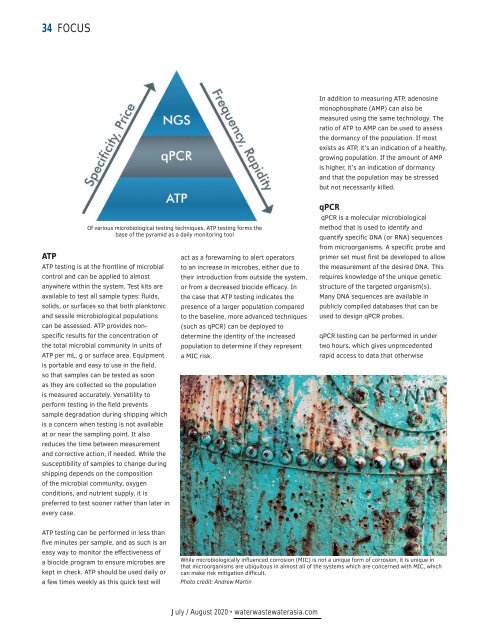Water & Wastewater Asia July/August 2020
Water & Wastewater Asia is an expert source of industry information, cementing its position as an indispensable tool for trade professionals in the water and wastewater industry. As the most reliable publication in the region, industry experts turn this premium journal for credible journalism and exclusive insight provided by fellow industry professionals. Water & Wastewater Asia incorporates the official newsletter of the Singapore Water Association (SWA).
Water & Wastewater Asia is an expert source of industry information, cementing its position as an indispensable tool for trade professionals in the water and wastewater industry. As the most reliable publication in the region, industry experts turn this premium journal for credible journalism and exclusive insight provided by fellow industry professionals. Water & Wastewater Asia incorporates the official newsletter of the Singapore Water Association (SWA).
- No tags were found...
Create successful ePaper yourself
Turn your PDF publications into a flip-book with our unique Google optimized e-Paper software.
34 FOCUS<br />
In addition to measuring ATP, adenosine<br />
monophosphate (AMP) can also be<br />
measured using the same technology. The<br />
ratio of ATP to AMP can be used to assess<br />
the dormancy of the population. If most<br />
exists as ATP, it’s an indication of a healthy,<br />
growing population. If the amount of AMP<br />
is higher, it’s an indication of dormancy<br />
and that the population may be stressed<br />
but not necessarily killed.<br />
Of various microbiological testing techniques, ATP testing forms the<br />
base of the pyramid as a daily monitoring tool<br />
ATP<br />
ATP testing is at the frontline of microbial<br />
control and can be applied to almost<br />
anywhere within the system. Test kits are<br />
available to test all sample types: fluids,<br />
solids, or surfaces so that both planktonic<br />
and sessile microbiological populations<br />
can be assessed. ATP provides nonspecific<br />
results for the concentration of<br />
the total microbial community in units of<br />
ATP per mL, g or surface area. Equipment<br />
is portable and easy to use in the field,<br />
so that samples can be tested as soon<br />
as they are collected so the population<br />
is measured accurately. Versatility to<br />
perform testing in the field prevents<br />
sample degradation during shipping which<br />
is a concern when testing is not available<br />
at or near the sampling point. It also<br />
reduces the time between measurement<br />
and corrective action, if needed. While the<br />
susceptibility of samples to change during<br />
shipping depends on the composition<br />
of the microbial community, oxygen<br />
conditions, and nutrient supply, it is<br />
preferred to test sooner rather than later in<br />
every case.<br />
act as a forewarning to alert operators<br />
to an increase in microbes, either due to<br />
their introduction from outside the system,<br />
or from a decreased biocide efficacy. In<br />
the case that ATP testing indicates the<br />
presence of a larger population compared<br />
to the baseline, more advanced techniques<br />
(such as qPCR) can be deployed to<br />
determine the identity of the increased<br />
population to determine if they represent<br />
a MIC risk.<br />
qPCR<br />
qPCR is a molecular microbiological<br />
method that is used to identify and<br />
quantify specific DNA (or RNA) sequences<br />
from microorganisms. A specific probe and<br />
primer set must first be developed to allow<br />
the measurement of the desired DNA. This<br />
requires knowledge of the unique genetic<br />
structure of the targeted organism(s).<br />
Many DNA sequences are available in<br />
publicly compiled databases that can be<br />
used to design qPCR probes.<br />
qPCR testing can be performed in under<br />
two hours, which gives unprecedented<br />
rapid access to data that otherwise<br />
ATP testing can be performed in less than<br />
five minutes per sample, and as such is an<br />
easy way to monitor the effectiveness of<br />
a biocide program to ensure microbes are<br />
kept in check. ATP should be used daily or<br />
a few times weekly as this quick test will<br />
While microbiologically influenced corrosion (MIC) is not a unique form of corrosion, it is unique in<br />
that microorganisms are ubiquitous in almost all of the systems which are concerned with MIC, which<br />
can make risk mitigation difficult.<br />
Photo credit: Andrew Martin<br />
<strong>July</strong> / <strong>August</strong> <strong>2020</strong> • waterwastewaterasia.com


















